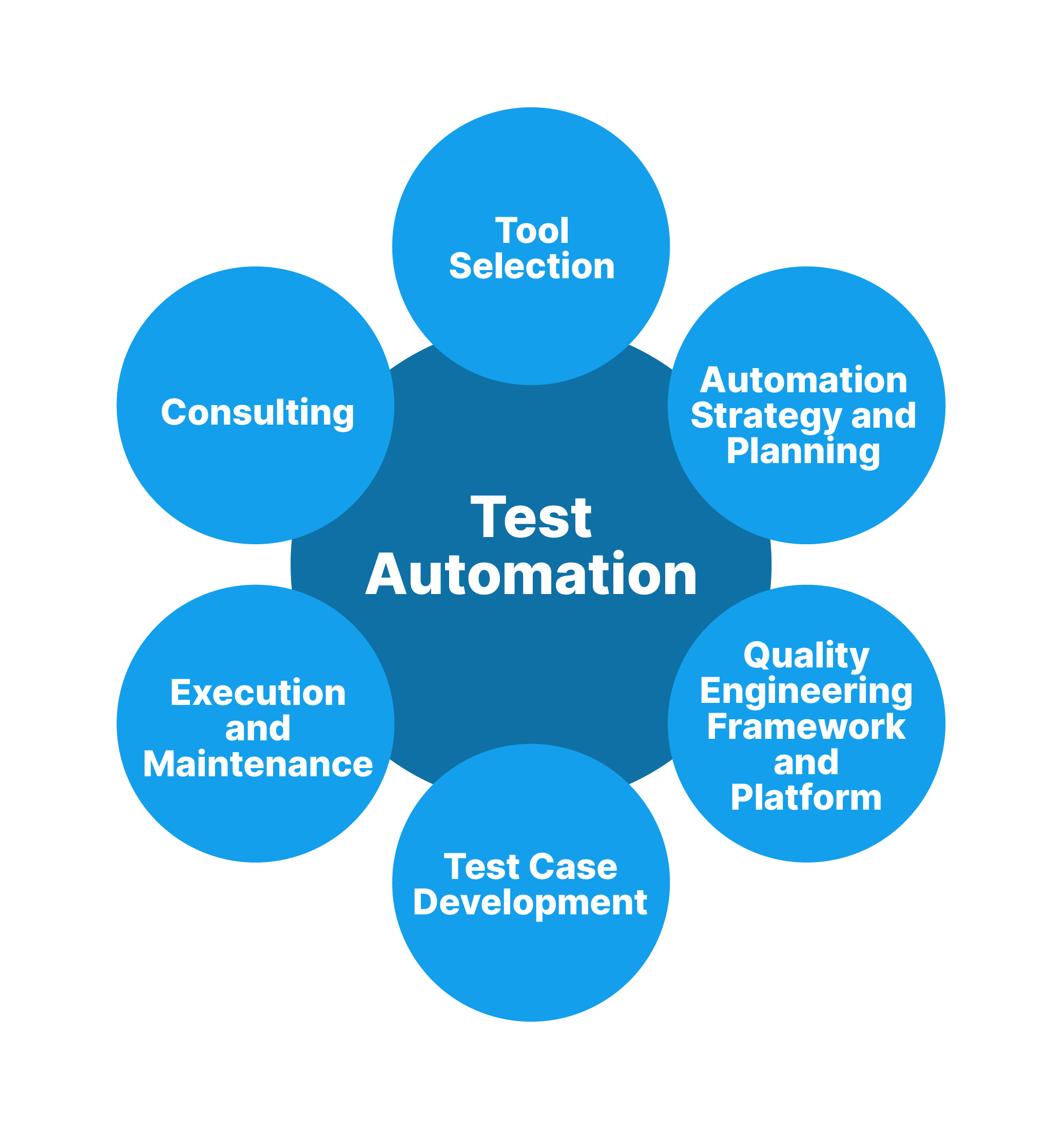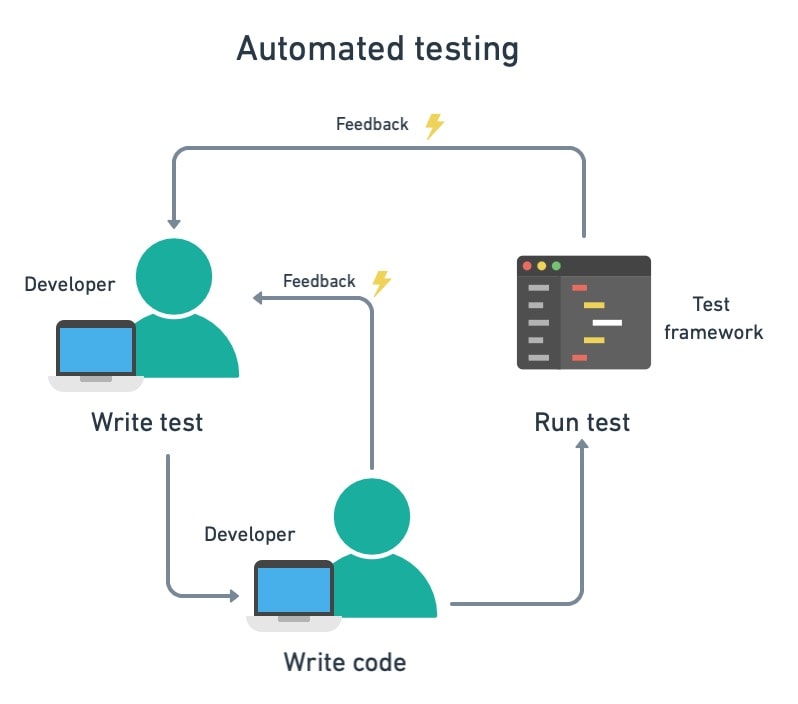Reliable Automation Testing: Enhancing Software Program Integrity and Rate
Reliable Automation Testing: Enhancing Software Program Integrity and Rate
Blog Article
From Manual to Automated Testing: A Comprehensive Overview to Transitioning Efficiently and Effectively
In the realm of software program screening, the change from manual to automated procedures has actually come to be an increasingly important transition for organizations seeking to enhance efficiency and accuracy in their screening practices. As technology remains to breakthrough, the demand for smooth and reliable automatic testing techniques has never been more important. The trip from guidebook to automated screening is not without its difficulties, however when approached strategically and with a clear plan in mind, the advantages can be substantial - automation testing. In this detailed overview, we will explore crucial steps and considerations necessary for an effective transition, from the first choice of tools to the assimilation of automation into existing workflows. Remain tuned to discover the understandings that will certainly help lead the way for a smoother and extra reliable screening process.
Advantages of Automated Examining
Automated screening offers many advantages, boosting efficiency and accuracy in software program growth processes. One main advantage is the significant reduction in screening time. Automated tests can be run all at once on multiple gadgets and running systems, considerably speeding up the testing phase contrasted to manual testing. This enhanced performance permits faster responses on the quality of the software application, making it possible for developers to determine and resolve concerns immediately.
Moreover, automated screening makes certain a greater level of precision in spotting defects. Uniformity in screening is also boosted, as automated tests perform the same actions precisely each time they are run.
Picking the Right Devices

Firstly, assess your goals and requirements. Understand the scope of your task, the modern technologies included, and the capability of your team. This analysis will certainly aid you establish the capacities and functions you need in your testing devices.
Second of all, think about the compatibility of the tools with your existing systems and processes. Seamless integration with your existing software program growth lifecycle is essential to make certain a smooth change to automation.
Furthermore, assess the scalability and flexibility of the devices. As your testing needs evolve, the devices need to be able to adjust and suit modifications effectively.
Last but not least, aspect in the support and community around the tools. When carrying out automated testing, durable support and an energetic customer community can supply important sources and help. By thoroughly taking into consideration these facets, you can choose the right devices that straighten with your demands and established the phase for an effective shift to automated screening.
Creating Effective Test Scripts

When crafting test manuscripts, it is necessary to take into consideration the particular needs of the software program being checked and guarantee that the look at here now manuscripts deal with all essential performances. Clear and descriptive calling conventions for test manuscripts and test situations can enhance readability and maintainability. Furthermore, incorporating mistake handling mechanisms within the examination manuscripts can help in recognizing and addressing concerns quickly.
In addition, organizing examination scripts into modular parts can improve reusability and scalability, lowering redundancy and improving effectiveness in test manuscript maintenance. Normal evaluations and updates to evaluate scripts are critical to maintain speed with advancing software application requirements and functionalities. By complying with these concepts, testers can develop efficient and durable examination manuscripts that add significantly to the success of automated testing processes.
Integrating Automation Into Workflows
By perfectly integrating automated screening tools like Selenium or Appium into the software development lifecycle, teams can accomplish faster feedback on code adjustments, leading to quicker bug discovery and resolution. This integration enables for constant testing throughout the advancement procedure, guaranteeing that any type of issues are determined early on, resulting in greater software high quality. Correct integration of automation tools calls for collaboration between advancement, screening, and operations teams to develop a unified operations that optimizes effectiveness and performance in delivering high-grade software products.
Making Certain a Smooth Transition
Effectively transitioning to automated testing includes thorough planning and careful execution to lessen disturbances and make best use of performance in the software development procedure - automation testing. To make sure a smooth shift, it is crucial to begin by performing a thorough assessment of the present testing processes and determining areas where automation can bring the most significant benefits. Involving with all stakeholders early on while doing so, including designers, testers, and job managers, is essential for garnering support and buy-in for the automation initiative
Interaction is vital throughout this shift phase. Clear communication of the goals, benefits, and expectations of automated testing assists to manage any resistance or concerns that might emerge. In addition, supplying sufficient training and resources for staff member to upskill in automation devices and methods is vital for ensuring an effective shift.

Verdict
Finally, transitioning from guidebook to automated screening supplies countless advantages, consisting of raised effectiveness and integrity. By selecting the proper devices, composing efficient test scripts, and integrating automation perfectly into workflows, companies can ensure a effective and smooth change. It is necessary to accept automation as an important asset in software screening procedures to improve overall top quality and performance.
In the world of software application testing, the shift from guidebook to automated procedures has become an increasingly crucial shift for organizations looking for to improve effectiveness and accuracy in their testing techniques. Automated examinations can be run concurrently on several devices and operating systems, drastically speeding up the screening stage compared to manual screening. Uniformity in testing is additionally enhanced, as automated tests implement the exact same steps exactly each time they are run.To guarantee the effective execution of selected screening tools, the production of efficient examination scripts plays a critical role in confirming the capability and performance of automated procedures - automation testing. By following these concepts, testers can create robust and effective test manuscripts that contribute substantially to the success of automated testing processes
Report this page